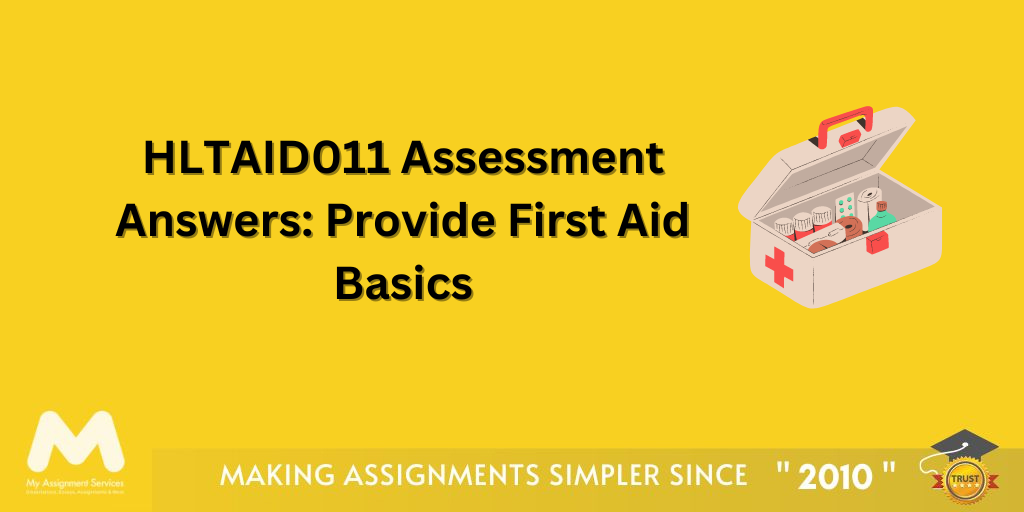
Nursing is the noblest of professions and it brings a social responsibility along with it. Nursing students all across the world find themselves caught up between hospital duty and coursework. When it comes to this particular subject, the number of hours spent in practice are efforts well spent. But theory goes hand in hand with practice, and the pressing need for excellent grades cannot be neglected either. Often exhausted by long hospital shifts, students find it impossible to dedicate time to their assignments. Our nursing assignment services prove to be valuable for students.
Areas of Nursing We Can Help With
Our team has been providing nursing assignment help to students for over a decade. We have an in-house team of dedicated writers who hold Ph.D. degrees in the discipline. Combined with their practical experience in care-giving, they are the best experts in the entire industry to write you nursing assignment, be it a case study, literature review or a dissertation. Some of the major topics covered by our services are:
- Human Physiology
- Pathophysiology
- Mental Health Nursing
- Palliative Care Nursing
- Geriatric Care Nursing
- Behavioral Health Nursing
- Pharmacology
- Micro Biology
- Legal & Ethical issues in Nursing
- Ambulatory Care Nursing
- Midwifery
- Emergency Care Nursing
- Aged Care Nursing
- Nursing TAFE Assignments
Assignment Question
Below is a recent nursing assessment solved by our experts.
Short answer questions – Students will write a brief response (approximately 300 words) in response to five (5) of the eight (8) choices provided.
- Why is a policy cycle an appropriate tool for developing a new policy? (your response must include
referenced materials and do not use dot points).
- How is a health policy different to a government policy document? (your response must include
referenced materials and do not use dot points).
- How does the ‘new public health’ differ from the old public health approach? (your response must
include referenced materials and do not use dot points).
- What are key sociological issues and how do they determine a person’s state of health? (your
response must include referenced materials and do not use dot points).
- What is meant by the term ‘power’ in policy development and change? (your response must
include referenced materials and do not use dot points).
- What policy considerations should be included in a national obesity health campaign? (your
response must include referenced materials and do not use dot points).
- If you were to create a new policy to develop a smoke free environment for the university what are at least 4 factors you would include and why? (your response must include referenced materials and do not use dot points).
- In what ways are “interconnected systems” problematic for health care policy development? (your response must include referenced materials and do not use dot points).
Assignment Solution
Here is the solution provided by them. The student had chosen the 5 questions.
Question 1
The policy cycle is the most appropriate tool for policy development owing to several reasons. First, the policy cycle is normative in nature. In other words, it allows for disaggregation of complex phenomenon into simple and manageable steps (Grutters et al, 2015). The cycle also serves as a guide with a particular sequence that can be used by practitioners to comprehend and implement the policy task at hand. Second, the policy cycle is a first foray into complexity. The cycle enables organising complex observations into familiar patterns and clearly prompts for action that needs to be taken (Kuhlmann et al, 2015).
In accordance with the aim and objective laid out in The Australian Policy Handbook, the policy cycle provides an answer to one of the most daunting questions (what do I do now) that might be faced by a policymaker (Ettelt et al, 2013). Research into policy making guides also indicate that the policy cycle helps policy makers in pin pointing the main issue out of a plethora of problems that might be present (Mason et al, 2013). Once a set of goals which need to be achieved have been laid down, the cycle helps in evaluating a set of policies which would be able to achieve these objectives (Denis & van Gestel, 2015). The policy cycle further allows policy makers to interact with public and sought their opinion on the matter. The cycle further provides room for development of an appropriate instrument, implementation and evaluation of the policy that has been developed (Datta & Mullainathan, 2014).
Evaluation has often been rated as the most important aspect of the policy cycle and further serves to make it an appropriate tool for policy development. Evaluation allows policy makers to gauge the actual impact of the policy, compare it with goals and objectives that had been laid out initially and then identify room for improvement that might exist (Greenfield et al, 2012).
Question 3
The difference between new and old public health approach does not lie in the adoption of new strategies and or measures so as to ensure healthy conditions. Rather, the difference lies in the manner in which core doctrines of previous era have been adopted and applied to health promotion initiatives of the new era (Taipale, 2016). Research studies are indicative of the fact that old or existing public health eras tend to become obsolete owing to health knowledge advances and changing health patterns (Grutters et al, 2015). This is the core reason why new eras come into existence. Currently, public health theorists appear to be of the opinion that the old approach to public health does not effectively address contemporary health issues such as terrorism and health inequalities thereby paving the way for new public health approach (Gauld et al, 2014).
In the new approach to healthcare, prevention, protection and education regarding health strategies have come a long way as compared to the old approach. Communication and education has been streamlined and the need for including all has been realised (Mason et al, 2013).
Question 5
Power in context of policy development and change might refer to various things. Primarily, power might be understood in terms of control over material resources and negotiations that form a part of formal process of policy development (Audi, 2014). In this context, power is closely related with authority figures who lead negotiation, institutions, procedures, structures and rules and regulations (Kuhlmann et al, 2015). It is possible that a specified set of regulations always need to be complied with while trying a policy that is in place or while trying to develop a new policy to solve an existing problem. While trying to develop a new healthcare policy for example, it might be necessary to adhere to a specific set of state laws, guidelines and procedures (Ettelt et al, 2013).
Alternately, power might also be understood as dominant values which in turn are responsible for shaping individual identities and preferences. A few dominant values might be clearly identified as a part of every culture and society (Denis & van Gestel, 2015). These values heavily influence the manner in which individual personalities are shaped and actions and interactions are carried out. Research indicates that such values are so deeply rooted in culture that they have a ‘power’ to influence policy development and change (Datta & Mullainathan, 2014).
Finally, power in context of policy development and change might also be realised in terms of social relations (Gauld et al, 2014). In other words, the manner in which people relate to one another and experience social relations has the power to influence policy development and change. Power holders might be socially inclined to benefit a particular group of individuals and this would influence overall focus of a policy (Greenfield et al, 2012).
In summary, it might be stated that ‘power’ in context of policy development and change influences the overall manner in which a policy might be shaped and implemented.
Question 6
Several community programs and nation-wide initiatives have been designed and implemented till date so as to produce better health results. Major considerations in these programs and initiatives however involve controlling food intake habits and introducing the element of physical workout (Grutters et al, 2015). Research indicates that the rate of success of these initiatives is limited and they are often not able to achieve their target goals. Therefore, it is necessary that policy considerations are laid out at a national level before implementation (Mason et al, 2013).
First important policy consideration at a national level would be to control sale conditions. Educating children and teen agers about food intake and watching calories would only provide partial results until junk food is cheaply available (Ettelt et al, 2013). Thus, a national level policy should consider and limit what schools and universities can offer their students. Another important national level policy consideration would be to subsidise healthier foods. It might be noticed that fruits, vegetables and healthier food alternatives are much more expensive as compared to foods like sugar and corn syrup (Datta & Mullainathan, 2014). This encourages individuals to purchase foods that have a higher fat content. Important policy considerations might also include banning or restricting certain food ingredients (such as Trans fats). Restricting Trans fats from entering the market would automatically have a positive impact on individual health (Greenfield et al, 2012). Finally, advertising efforts undertaken by firms might be scrutinised so as to produce national health benefits (Murphy & MacKenzie, 2013). National policy might be aimed at restricting advertising of foods that are low in nutrition and have a high fat content. This might include junk foods, sodas and finger foods. Alternately, advertising of healthier food alternatives might be increased so as to encourage their production and consumption (Wright et al, 2013).
These policy considerations if transformed into a policy and implemented on a national level might be successful in producing nation-wide health benefits.
Question 7
Several important factors might be considered while trying to develop and implement a smoke-free policy for a university. First and foremost, it would be important to consider the nature of policy that needs to be developed (Ettelt et al, 2013). It would be important to decide areas that the policy would cover and possible loopholes that might exist. For example, the new policy might not remain restricted to use of cigarettes and tobacco products but also include the use of e-cigarettes and other electronic smoking devises (Gauld et al, 2014). The new policy might also restrict smoking activities in indoor as well as outdoor spaces including but not limited to university parking lots (Denis & van Gestel, 2015).
Another important factor to consider would consist of keeping a watch on advertising efforts regarding tobacco and nicotine products within the university campus. It would be important that all advertising efforts within the university campus are blocked (except for those in magazines and in newspapers) (Kuhlmann et al, 2015).
It would also be extremely important to consider the manner in which the policy would finally be implemented in the university campus (Datta & Mullainathan, 2014). It is essential that enforcement is well planned out and educational in nature. In this context, it would be important to note if there are any existing educational measures active in the university. It would also be essential to take a note of state laws and policies that might be applicable to the university and then device the policy accordingly (Murphy & MacKenzie, 2013).
Finally, it would be essential to consider the applicability of policy. It is essential that the policy is not designed explicitly for students but is also applicable to staff members, academic appointees, volunteers and family members of students, contractors and everyone who might enter university premises (Denis & van Gestel, 2015).
With these considerations in mind, it might be ensured that the new policy is well rounded, fair and effective.
References
Audi, R. (2014). Church-State Separation, Healthcare Policy, and Religious Liberty.Journal of Practical Ethics,2(1), 23-27
Datta, S. & Mullainathan, S. (2014). Behavioural design: a new approach to development policy.Review of Income and Wealth,60(1), 7-35
Denis, J.L. & Van Gestel, N. (2015). Leadership and innovation in healthcare governance. InThe Palgrave International Handbook of Healthcare Policy and Governance, Palgrave Macmillan UK, 425-440
Ettelt, S., Mays, N. & Nolte, E. (2013). Policy–research linkage: what we have learned from providing a rapid response facility for international healthcare comparisons to the Department of Health in England.Evidence & Policy: A Journal of Research, Debate and Practice,9(2), 245-254
Gauld, R., Burgers, J., Dobrow, M., Minhas, R., Wendt, C., B. Cohen, A. & Luxford, K. (2014). Healthcare system performance improvement: a comparison of key policies in seven high-income countries.Journal of health organization and management,28(1), 2-20
Greenfield, D., Pawsey, M., Hinchcliff, R., Moldovan, M. & Braithwaite, J. (2012). The standard of healthcare accreditation standards: a review of empirical research underpinning their development and impact.BMC health services research,12(1), 1
Grutters, J.P., van Asselt, M.B., Chalkidou, K. & Joore, M.A. (2015). Healthy decisions: towards uncertainty tolerance in healthcare policy. Pharmacoeconomics,33(1), 1
Kuhlmann, E., Blank, R.H., Bourgeault, I.L. & Wendt, C. (2015). Healthcare Policy and Governance in International Perspective. InThe Palgrave International Handbook of Healthcare Policy and Governance, 3-19
Mason, D.J., Leavitt, J.K. & Chaffee, M.W. (2013).Policy and Politics in Nursing and Healthcare-Revised Reprint. Elsevier Health Sciences
Murphy, G.T. & MacKenzie, A. (2013). Using evidence to meet population healthcare needs: Successes and challenges.Healthc Pap,13(2), 9-21
Taipale, V. (2016). Healthcare policy in Africa: institutions and politics from colonialism to the present.Medicine, Conflict and Survival, 1-3
Wright, A., Sittig, D.F. & Ash, I.S. (2013). Clinical Decision Support Systems in Healthcare 175.Health Informatics: An Interprofessional Approach, 174
Order Your Nursing Assignment
My Assignment Services has been providing assignment help to students for over a decade. The major highlights of our services are:
- Affordable services
- Before time delivery
- 100% original and plagiarism-free
- Partial payments
- Complimentary Plagiarism report
- 24*7 customer service
- One-on-one discussions with experts
- Initial draft
- Multiple revisions
- Refer and earn policy
Reach us via call or email and avail affordable assignment help from our experts. Order now!
Related Study Materials
Our Experts can answer your Assignment questions instantly.
Ask Question0 Comment
Get It Done! Today
1,212,718Orders
4.9/5Rating
5,063Experts














Loved reading this Blog? Share your valuable thoughts in the comment section.
Add comment